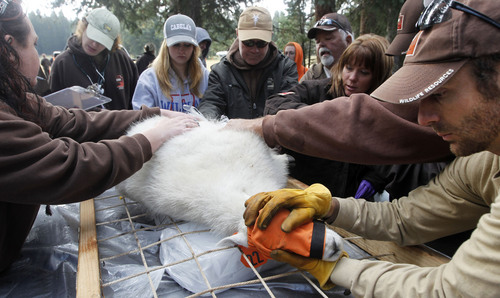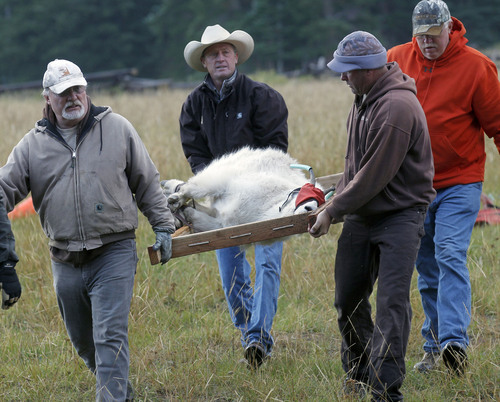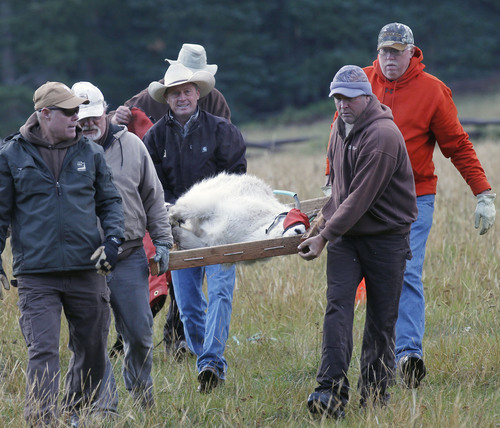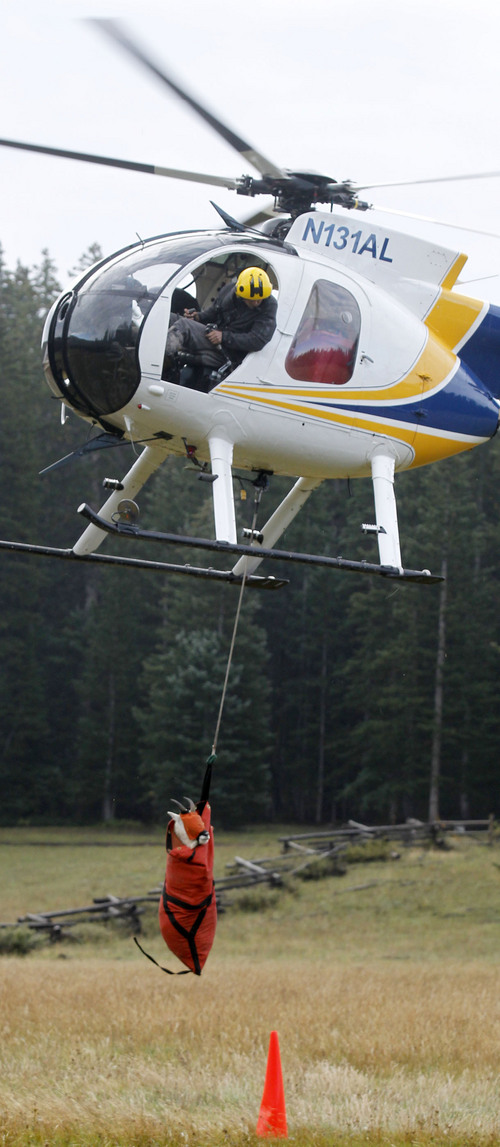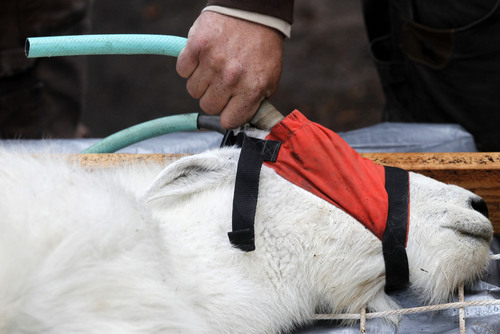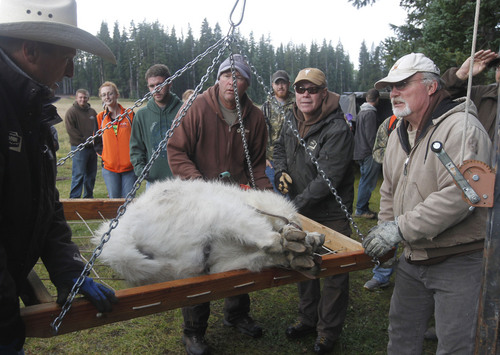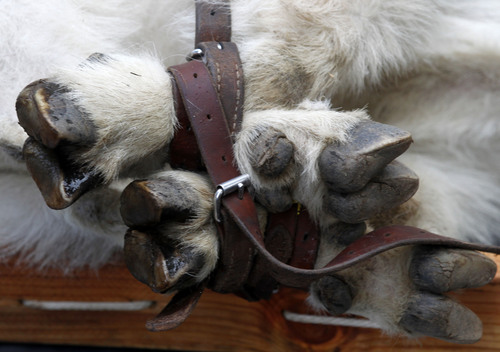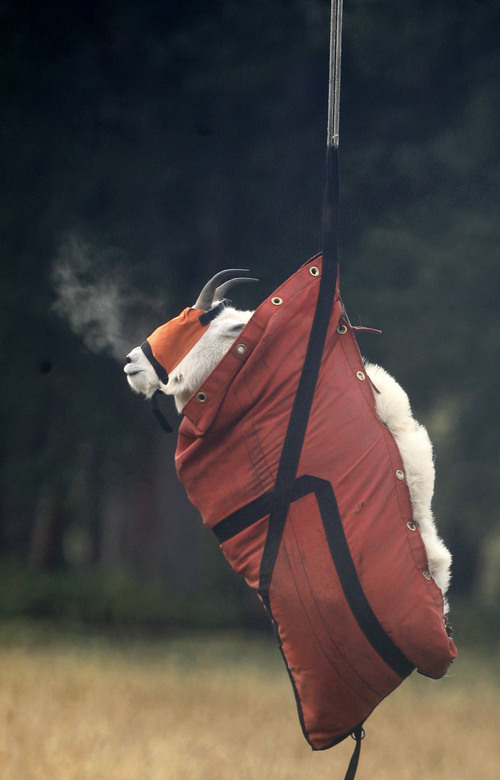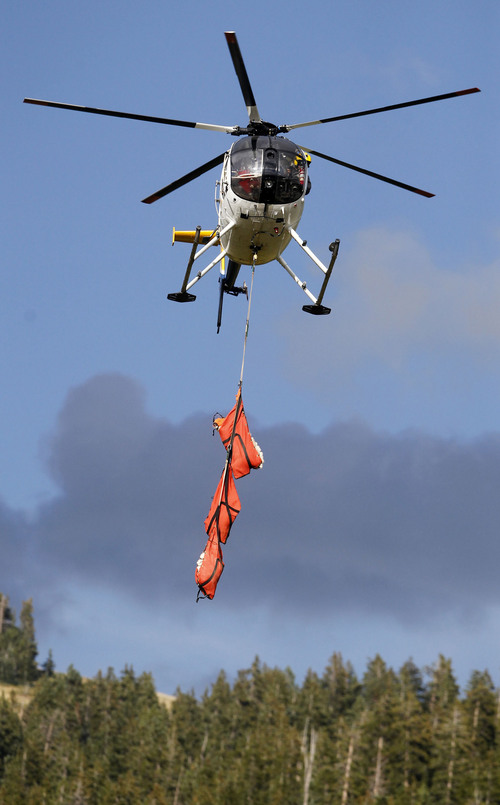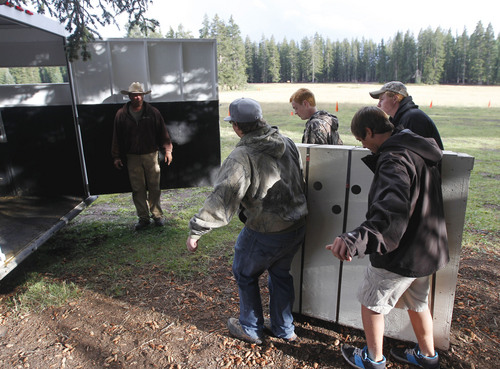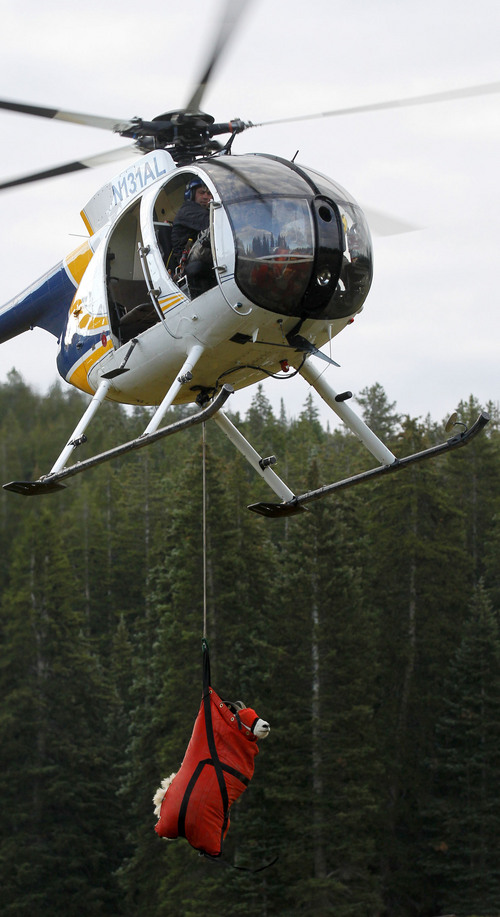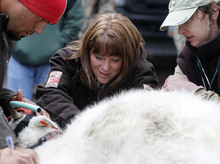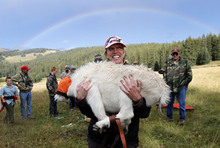This is an archived article that was published on sltrib.com in 2013, and information in the article may be outdated. It is provided only for personal research purposes and may not be reprinted.
Tushar Mountains • Mountain goats have a penchant for finding the highest places on the land. They got a little help to even greater heights during a capture and relocation on these mountains east of Beaver last week.
A capture crew used a helicopter, net guns and slings to catch more than 50 of the wild goats from their home about 12,000 feet above sea level and delivered them to Utah wildlife biologists. The blindfolded animals made nary a snort while being given a series of medical tests, adorned with collars, loaded into crates and given their marching orders.
It was the start of a grand adventure for the billies, nannies and kids. Twenty went south to become the first-ever — and controversial — population of known mountain goats on the La Sal Mountains east of Moab. Ten were shipped north to augment an existing population on Mount Nebo, and 23 were driven to a new home two states away.
"These guys are headed to the Black Hills and Mount Rushmore, in that general area," said Andy Lindbloom, a senior big game biologist for the South Dakota Department of Game, Fish and Parks. "They will provide some new bloodlines for our population."
More than 200 mountain goats have been relocated from the Tushar Mountains and moved to other locations with the completion of this recent capture, said Brent Farnsworth, a conservation officer with the Utah Division of Wildlife Resources (DWR). It's an interesting fact considering that the Tushar population also was started by relocated mountain goats from the Lone Peak Wilderness Area and Mount Timpanogos on the Wasatch Front and Olympic National Park in Washington state.
"They were first brought into this area in 1986. More animals were brought in 1988," said Riley Peck, a regional wildlife biologist with the DWR. "There are about 270 now. There is fantastic habitat here."
So fantastic that the mountain goat population for the Tushars is far exceeding the 125-animal target. Hunting permits for this fall could remove another 30 animals, and a second mountain goat transplant is scheduled for October that will bolster the Mount Dutton herd, just to the south.
Even with all the subtractions, there still should be plenty of mountain goats for the general public to check out on their own or during the state's Watchable Wildlife viewing events in 2014.
"We recently had our big viewing day and had close to 250 people here," Peck said. "A three-day county event brought another 2,000 people just to look at mountain goats."
Large concentrations of wildlife can lead to disease outbreak, but DWR wildlife disease program coordinator Leslie McFarlane said the goats from the capture looked healthy.
Once the goats were delivered, hobbled and hanging from slings under the helicopter, biologists moved them to triage-like tables to have "biological" samples collected for a variety of disease testing. Vital statistics such as weight and sex were recorded, and the goats were given an antibiotic, something to control worms and an anti-inflammatory to keep their temperatures down and help with any soreness from the relocation.
"They have thick coats and can get warm from the capture," McFarlane said. "We monitor their temperature carefully and keep them cool with ice and an alcohol/water spray."
Biologists also used the opportunity to put radio collars on the animals. All 23 sent to South Dakota were outfitted with ear tags and radio collars. Several of the goats headed to the La Sals were given GPS units so researchers can see where they end up living on that mountain.
Once everything was completed, the animals were moved to the front of their travel crates. Male and female mountain goats both grow horns, and they are sharp. Pieces of green garden hose placed on the horns to protect the biologist were removed, along with the hobbles and blindfolds before the animals were put in the crates.
Wood shavings and ice blocks already were in the boxes to try to help make the trip more comfortable for the goats.
"We will get them there as quickly as possible," Lindbloom said about the 15- to 16-hour drive to South Dakota. "It will be a long night."
Twitter: @BrettPrettyman —
Mountain goats in Utah
There were no mountain goats in Utah when the pioneers arrived, and all current populations in the state were transplanted from other places. The first introduction involved six goats from Washington state released in the Lone Peak Wilderness Area in 1967. Utah Division of Wildlife officials say the native status of mountain goats is debatable, but the species is native to North America and the Northern Rocky Mountains, and that mountain goat habitat exists in Utah. The current statewide population is estimated to be about 2,000.



